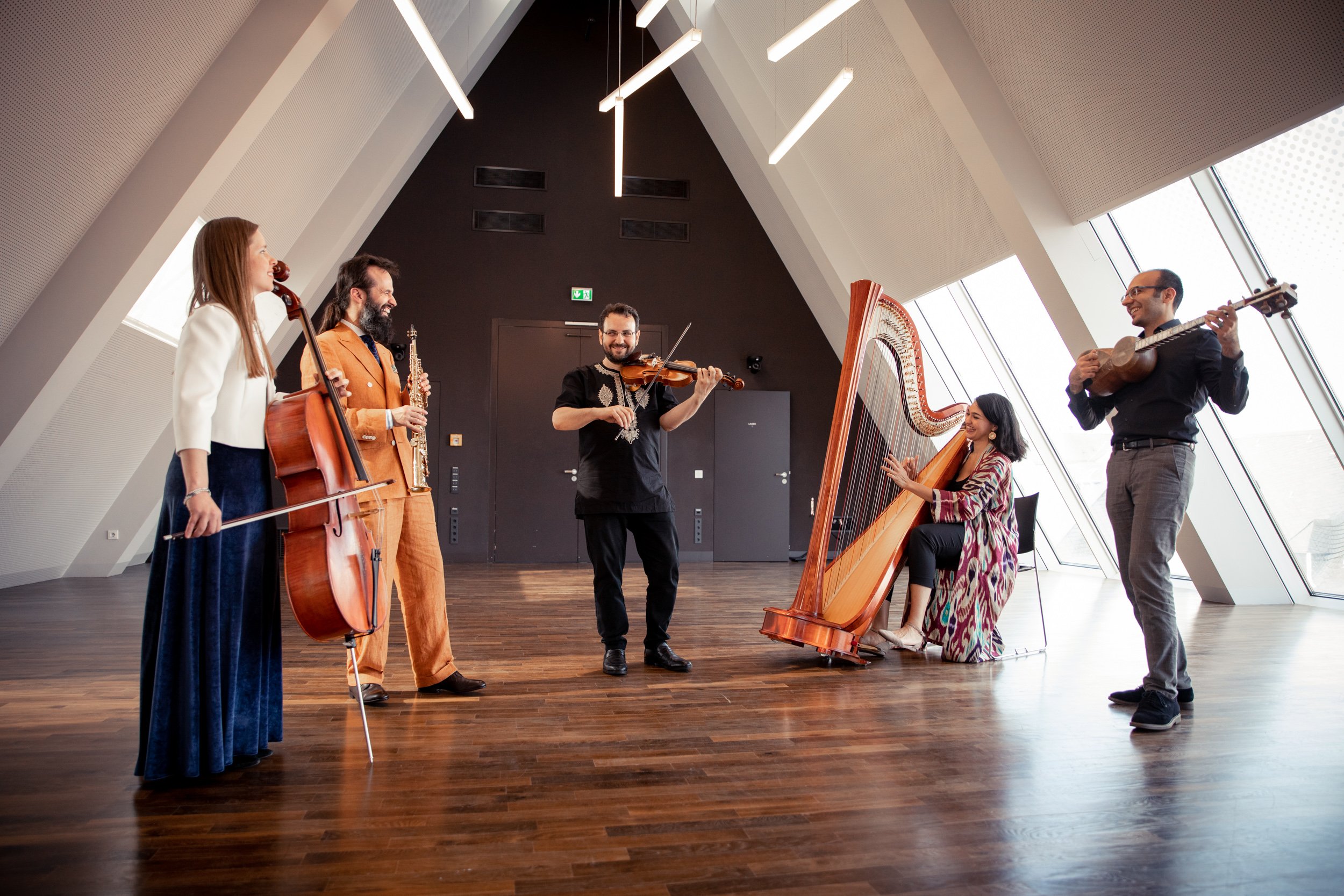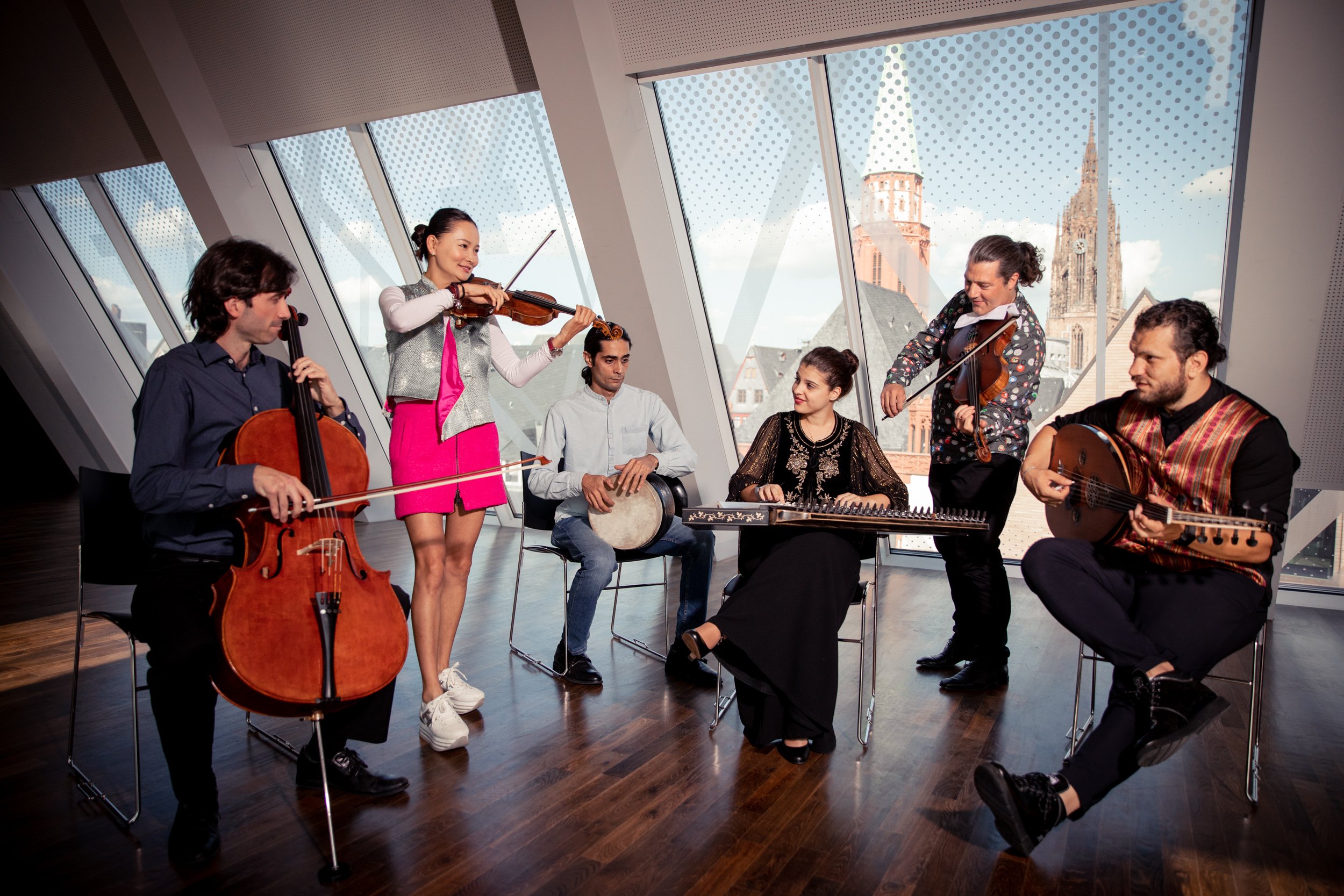The West and the rest?
World music* today
The genre of "world music" is a concept that has been dominated by the West through its categorisation of music from the global context in a deficit way. This is problematic because music with Western stylistic attributes is elevated to a kind of norm or standard and juxtaposed with music from the global context which is then judged as “different” or “other”. Furthermore, this also shows how cultural diversity in music is dealt with in countries like Germany. How can a new generation of “world-musicians” dissolve this concept and exploit the artistic potential that lies within this scene?
*World music
The term “World music” was established in the 80s and 90s within the music industry. It replaced the terms World Beat, World Fusion, Roots Music, Ethnic Music and International Music. In recent years, the concept that incorporates all kinds of quasi-traditional, intercultural, and traditional music, has been criticised for not reflecting the heterogenous, dynamic transcultural reality. (Welsch, 2010)
The term “world music'' quickly conjures up images of hippies wearing harem pants, huddling in front of a small CD rack in the far corner of a record store, preferably carrying a tambourine or an “exotic-looking” drum under their arm. But what actually happens when musicians from different cultural backgrounds come together and make music has little to do with this stereotype. On the contrary, "world music" today is a constantly changing transcultural scene that is actually grounded in a very different normality than how it is currently practiced in German musical institutions.
The beginning of world music
“World music” as a musical genre emerged in the 1980s in Great Britain as an all-encompassing, makeshift label for music from Asia and Africa, intended to promote sales. In more current discourses, the term faces more critical scrutiny. This is because it is also used outside of a marketing context for everything that cannot be subsumed under music with Western stylistic attributes such as classical music, jazz, or pop. The fact that the West dominates the concept of “world music” in this way is not only problematic because "our" music is elevated to a kind of norm or standard and juxtaposed with music with roots in non-European cultures. This also, unfortunately, shows how cultural diversity in music is dealt with in countries like Germany. In a country that is increasingly characterised by migration and therefore also by a music scene that is in constant flux the so-called “normality” of music institutions often does not correspond to, or reflect, this diverse reality.
The West and the rest
Samira Mermazadeh is a Frankfurt-based musician who studied classical harp, Islamic studies and ethnology. She is concerned about this contradiction of musical culture and the industry in her work as a musician. She says: "You hardly find diversity in the usual established music institutions. Other musical cultures, other instruments, other traditions are not valued in the sense that they are given institutional space or support. At music schools there are still only Western instruments and here in Frankfurt you can't really learn to play the bağlama* or oud**, for example."
*bağlama
The bağlama is the main representative of Saz which is the name for a group of long-necked lutes that are important in Turkish, Kurdish, Iranian, Armenian, Azerbaijani and Afghan musical cultures
**oud
The oud is a short-necked, fretless lute belonging to the family of shell-necked lutes. It is one of the most popular instruments in Arabic countries and is also played in Turkey and Iran with differences in style and timbre.
Out of fear that she would no longer be taken seriously as a classical musician, she kept her interest in non-European music a secret at the conservatory. Like Samira, many musicians (with and without a migration background) experience the separation of Western European music and the simultaneous grouping of all music outside this cultural sphere as very problematic. Such a division into "the West and the rest" is a devaluation of these musical cultures and skills. Non-European music and the training of traditional instruments remains an exception in the European context.
© Salar Baygan
Bridges – Musik verbindet
Samira lives and works in Frankfurt. Today, more than 40% of the residents here have migration experience. As in many large cities, whose cityscape is strongly characterised by the encounter of different cultures, there is also a large gap between how Frankfurt "sounds" and how this sound is institutionalised. Samira plays the harp for “Bridges - Musik verbindet” (translation: “Music connects''), an umbrella project for various transcultural ensembles and bands with very different repertoires. Bridges tries to capture this "Frankfurt sound" in its concert programes by bringing together musicians from very different cultural and musical backgrounds. The ensembles create a professional framework in which there is room for diverse skills and artistic expressions - a space that international musicians deserve in a "post-migrant" society. Bridges also provides a space for professional musicians from other musical cultures to work and present their music and in turn earn a livelihood. According to Samira: “Music from the global context is often stereotyped under a "world peace mediation tolerance" framework with little or no artistic standing - except for very few artists and groups."
A new generation
The musicians of Bridges arrange and compose most of the traditional, contemporary or classical repertoire themselves, so that the ensemble develops, to a certain extent, its very own transcultural musical language. Hesham Hamra, an oud player, who composes for Bridges explains: "I want to combine different musical genres, for example, Indian music and Latin music. I listen to so much different music: Turkish, Arabic, Persian, Kurdish. Everything has changed, it's not like before. And that's why I think projects like Bridges, for example, are really missing."
The music scene is a cultural space whose audience changes just as dynamically as the artistic processes themselves. Musicians from the global context must therefore be enabled to participate as much as possible in the creation of this "music of the future" - also so that listeners from as many parts of our society as possible can find themselves in this music. "I know that the population in Germany is changing” says Hesham “and there are so many people here who have a migration background. That's why we have to find a solution for how music and concerts can take place in the future. And I think a project like Bridges is important so that music lives."
Artists like Hesham and Samira show that a new generation of "world musicians" are - consciously or unconsciously - pushing the boundaries of style and genre. In their music it becomes audible that (music) cultures cannot be clearly distinguished from each other and that concepts such as "world music" and "Western music" do not reflect reality. Rather, the music that surrounds us is the result of constant cultural transfer, cultural encounters and the fusion of different styles. Transcultural music groups hold valuable potential for the visibility - or rather audibility - of diversity in our society, which - unlike in the concert hall - is normal there.



